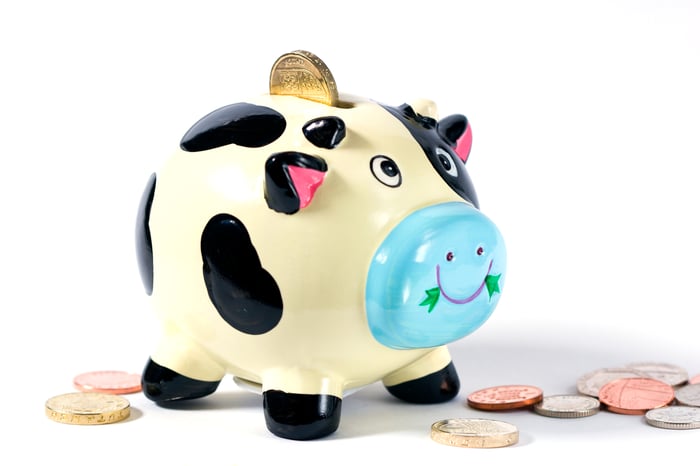The biggest fear for most dividend investors is a dividend cut. This is why simply chasing the highest-yielding stocks is usually a mistake. In the oil patch, which is facing long-term headwinds as the world looks to reduce carbon dioxide emissions, there are still a few options where the risk of a dividend cut looks very low. This is why dividend investors will like Royal Dutch Shell (RDS.B), Chevron (CVX 0.14%), and TotalEnergies (TTE 1.46%).
1. Been there, done that
Getting the bad news out of the way, Royal Dutch Shell cut its dividend at the start of 2020 just as it was preparing to shift its business toward a cleaner future. However, the energy company basically stated that it wanted to get back to steady dividend growth as quickly as possible. It has since done that, having announced three dividend increases since the cut. Management is living up to its promises and, with a lower payout, the dividend looks more secure than it has in many years.

Image source: Getty Images.
To be fair, Shell's yield, at 3%, is toward the low end of its peer group. Thus, the stock probably won't be of interest to dividend investors looking to maximize the income their portfolios generate. However, for those in search of dividend growth, it might be a good fit. What's key here is that the world still needs oil and natural gas and will for many years to come, even as clean energy production grows in importance. So there's ample time for Shell to milk the cash cow oil business to fund its clean energy overhaul. And with a less onerous dividend burden, that should end up being much easier to accomplish.
2. Rock-solid foundation
Another oil dividend payer you can trust is Chevron. It is not looking to aggressively transition toward a cleaner future, however, with management choosing to continue its oil and natural gas focus while only dipping its toes into cleaner alternatives. While that might seem at odds with the current socially responsible investing zeitgeist, it is in line with the likely future of the energy industry, as noted above. Investors should rest easy as they collect Chevron's generous 4.7% yield.
But what really sets Chevron apart from the pack is its low leverage. With a debt-to-equity ratio of roughly 0.33 times, it has the strongest balance sheet of any oil major. And that's after making an opportunistic acquisition during the oil downturn in 2020, which ensured that Chevron exited the difficult period in better shape than it entered it. With a rock-solid foundation and demand for oil and natural gas expected to remain for decades to come, Chevron's dividend looks as safe as ever and is probably the best option for conservative investors.
RDS.B Dividend Yield data by YCharts
3. A balancing act
The last name here, TotalEnergies, probably has the riskiest dividend, but investors have been given an important line in the sand. And that number is $40 per barrel, which is the oil price level that the board highlighted as high enough to sustain the dividend during the pandemic-driven oil bear market in 2020. Today, oil is around twice that level, so there's plenty of room before investors need to worry about the dividend. In fact, the company recently announced that $60 per-barrel oil could give it enough leeway to raise its dividend.
So the dividend appears pretty safe today. But the really interesting story is that, like Shell, TotalEnergies is working to transition its business in a cleaner direction along with the rest of the world. It has simply chosen a different path than Shell, believing that the dividend is so important to its shareholders that it needed to continue to support it at a high level. The stock's dividend yield today is near the top of its peer group at 6%. So far, however, it looks like TotalEnergies has managed to handle the balancing act it's undertaken in relative stride. It could be the best option for investors seeking out big yields in the oil patch.
Finding secure oil dividends
There's no such thing as a risk-free investment, and oil names like Shell, Chevron, and TotalEnergies are facing a changed business landscape. However, they each appear to offer a safe dividend given the transitions that are taking place in the industry and at each of the respective companies. Shell's earlier dividend cut has lowered the risk on its now growing dividend. Chevron's strong balance sheet gives it the wherewithal to keep paying even as it sticks close to its carbon fuel core. And TotalEnergies has managed to please dividend investors and clean energy advocates as it changes with the times. One of these high-yield oil stocks will likely fit well in your dividend portfolio.





